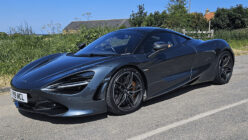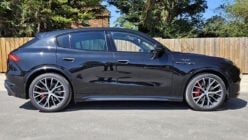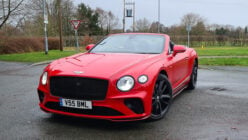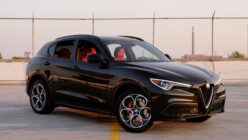
It seems like only yesterday that the 120-year old manufacturer of some of the world’s most luxurious and high-status symbol vehicles made the decision to build a “high-sided vehicle“, and the accompanying fury in internet comments.
Surprisingly, the Rolls-Royce Cullinan has been with us a little while now; it’s six years on from the original announcement and the car’s subsequent arrival on the roads.
Rolls-Royce has accordingly taken the opportunity to give the car a little bit of a refresh to create the Cullinan II. That’s effectively a second-generation car, although the changes are more subtle from some angles than others.
We’ve had the chance to drive the car around the roads of Yorkshire for a little while to check out the car named for the largest diamond ever discovered, in “Black Badge” specification.
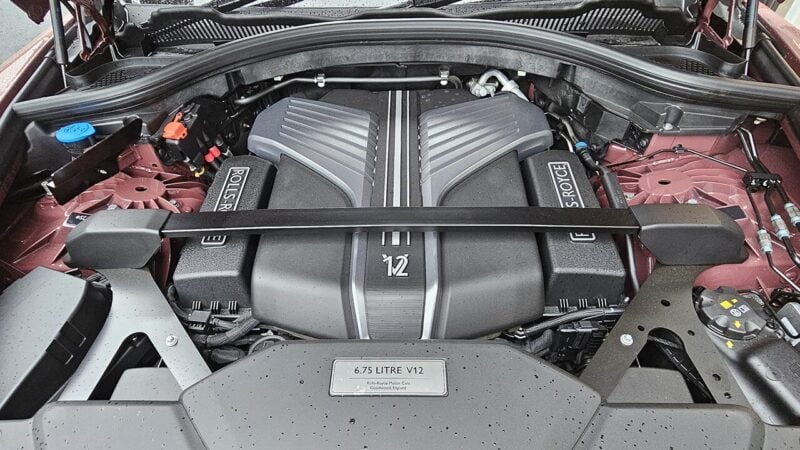
What Makes it Go?
The Cullinan’s heart remains the BMW-sourced, twin-turbocharged N74 V12 which you’ll find elsewhere in the Rolls-Royce range. Almost across the board, in fact, save the EV Spectre.
Although the N74 has also been used in the BMW 7 Series, this variant is exclusive to Rolls-Royce, coming in a 6.75-liter capacity and producing 563hp. That’s the same as the original Cullinan, and the facelift model still eschews any form of electrical assistance.
However the Black Badge model again has a little bump in the power output, with 591hp on tap as well as another 37lbft of torque at some 664lbft. In both cases that drives a ZF-sourced eight-speed automatic, which sends power to all four wheels. That is, of course, a first for a Rolls-Royce.
Performance is just about immaterial really. As legend has it, old Rolls-Royces merely had “sufficient” power, and in this case that means a hustle up to 60mph in around five seconds and a restricted 155mph top speed.
Not that you’ll be doing either of those things, because the Cullinan doesn’t exactly encourage it; there isn’t even a rev counter in here, just a “power reserve” dial.
Provoking the V12 into life also means that the official fuel economy of around 17mpg (Imp) plummets quicker than the car goes forwards. There’s a 100-liter fuel tank, so officially the range is about 375 miles.

What’s it Like to Drive?
In the words of Bjork, it’s oh so quiet. The V12 is barely perceptible when you fire it up for the first time, and it doesn’t get all that much noisier if you start pressing the right-hand pedal. I’ve driven quieter — most of the more-modest EVs make very little sound — but it’s a close call and the Cullinan certainly has to be up there in terms of hp or even cc per decibel.
That doesn’t particularly inspire the need to hustle to car, even if you’re not petrified of returning the incredibly expensive press car (or its immaculate 23-inch wheels) to Rolls-Royce in a different shape than it was previously. Nonetheless it feels lithe enough for a vehicle that’s closer to three tons than to two.
In general terms the Cullinan’s body roll feels rather well-contained side-to-side. There’s a little sense of a rising hydrofoil if you really stamp loud pedal, but it’s not a really significant rearwards squat. Braking is a little more of an adventure, with the car better suited to chauffeur-style anticipation of deceleration than track-day hard stops.
Maneuverability is enhanced by four-wheel steering, which makes the Cullinan really very easy to drive around tighter, urban roads despite its size compared to normal UK traffic.
Putting away your inner hooligan is really the only way to drive the car though. The whole thing is geared towards the maximum amount of waft, and we actually mean that literally as the gearbox itself takes cues from the navigation system to hold onto gears going uphill and advance them going down.
That’s not the only party piece, as the Cullinan also employs the same camera-based suspension adjustment system (called “Flagbearer”) as other models in the Rolls-Royce range. The car continually scans the road ahead with a pair of cameras and tweaks the air suspension appropriately for the surface, at speeds of up to 62mph.
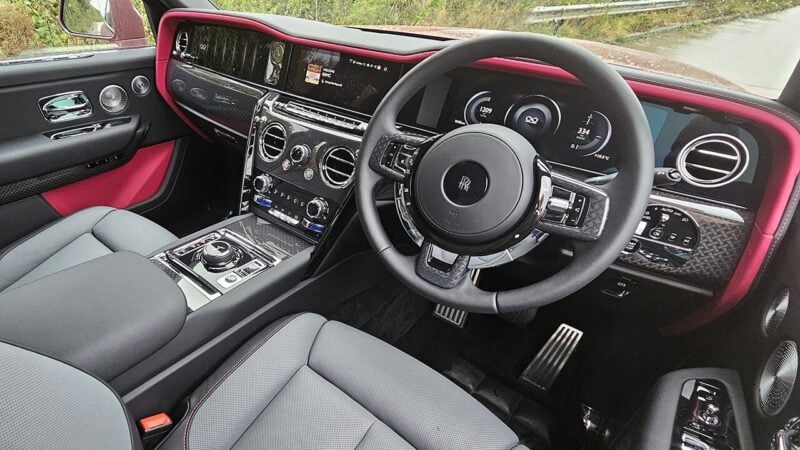
And on the Inside?
There’s two reviews’ worth of comments we could make on the car’s cabin alone, but we do have to hit “submit” at some point. Put another way, if you could imagine the most sumptuous environment you’ve ever been in then the Cullinan is as good or — unless it was another Rolls-Royce — better.
The seats are immense and generous, even more so in the back if you opt for the two-pew Individual Seat option rather than the standard three-seat configuration. Adjustment positions are wide-ranging, 12-way in both fronts, and all seats are heated, cooled, and even massaging should you go for that option.
Standard specification is of course vast, and really it’d easier to list what it doesn’t have than what it does. However there’s some highlights for the Cullinan II too. The updated car sports a full-width glass fascia with an illuminated gallery on the passenger side that features, as standard, the wordmark and a “cityscape” graphic. That can be personalized as part of the extensive Bespoke program.
Importantly there’s also an updated version of the Rolls-Royce infotainment OS, SPIRIT, which made a debut on Spectre and provides a more intuitive interface than the previous car. There’s better connectivity too, with individual device connection for the two rear screens, Bluetooth for the rear entertainment system, and a Wifi hot-spot.
One neat new feature is the incorporation of the “Spirit of Ecstasy” (fun fact for you: she’s called Eleanor) in the cabin, illuminated in a small glass display case along with an analog clock.
If that’s not quite enough for you, there’s a lot of scope for upgrades to various items — fancy an 18-speaker, 1400-watt audio system which uses the car’s own aluminum structure as a giant subwoofer? — as well as a huge range of personalization options. You can even, for the first time, specify cloth seats with a special “Duality Twill” material made from bamboo.
Whoever specified our car, with the Morganite exterior paint and the Peony Pink interior highlights, certainly got Bespoke happy, but the sky is the absolute limit here. Literally: you can have the starlight headliner made to any light pattern you want, even specific night sky scapes…

How Much Does it Cost?
As the saying goes, if you have to ask…
Rolls-Royce doesn’t habitually list prices on its cars, largely because it likes to sit down with each customer and go through an extensive commissioning process. In fact that’s actually why I was driving it in the first place, as the brand has just opened a new dealership in Leeds.
The Black Badge model is actually slightly less customizable, as it comes with a whole host of pre-installed options, but you can still send the price up pretty high through the Bespoke service. We’ve no idea how much the car we actually drove would cost with the options installed, but on its own the Black Badge is in the region of £380,000 (~$500,000) — compared to the “Silver Badge” at £300,000.
What are the Main Rivals?
Technically speaking, the Cullinan fits into a pretty well-populated bracket now of highly aspirational SUVs (ignoring Goodwood’s protestations at this branding). There’s really no shortage of them: Aston Martin DBX, Bentley Bentayga, Ferrari Purosangue (Maranello being no more keen on the classification), Lamborghini Urus, Maybach GLS, and so on.
It doesn’t really duke it out with any of them though. Really it’s only a rival for an extremely highly specified Range Rover — but the pricing isn’t especially close even if you tick every box that Coventry will allow.
Nonetheless, the very well-to-do may turn up at polo matches in either, and while the Cullinan isn’t necessarily as adept at off-roading as the Rangey the R-R is going to get as far away from an asphalted road as the average RR anyway.
A second-hand Cessna 182 might be a viable option. Or a personalized coach/RV? Mind you, it’s not like a typical Cullinan customer is going to need to make any kind of choice here.
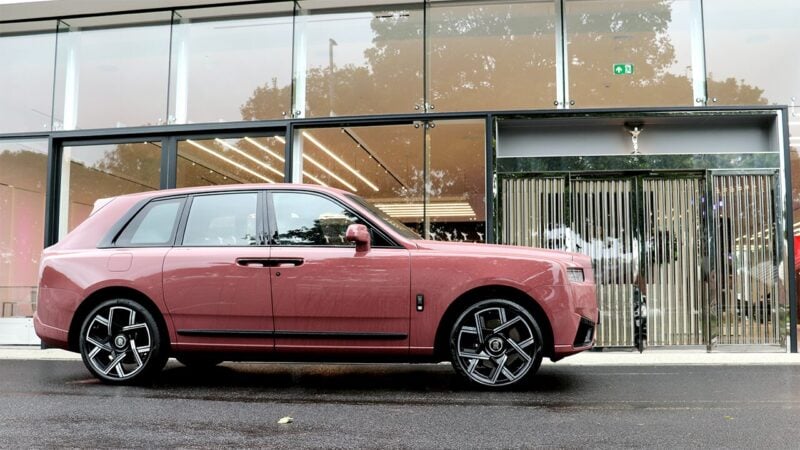
What’s the Verdict?
In some respects, building a car like the Cullinan is easy; it’s virtually a blank cheque to do whatever you want. Then again, the execution needs to be pretty close to perfection, because when your customers are dropping near-enough 500 large on a car they’re going to be rather discerning.
Like or loathe the trend towards these behemoths — and it’s not like the brand has been shy and understated in the past — it’s very difficult to argue that Rolls-Royce hasn’t nailed it. It’s not so much a car as it is a piece of theater, or an event that happens around you while you’re cocooned in several inches of lambswool.
Ignoring the price and size, there’s some flies in the ointment. There’s no hybrid or electric option yet, for example; “rivals” offer both, and Rolls-Royce does now have that in its arsenal with the Spectre. Having such a system providing some regenerative braking might also improve the raw stopping power too, which is the only real weak area in the driving manners — not that you should be dropping anchor in a Rolls.
Really though, and much like its namesake, it’s an almost flawless execution of the Rolls-Royce ethos in SUV form.
See more articles on Quick Drives and Rolls-Royce.

